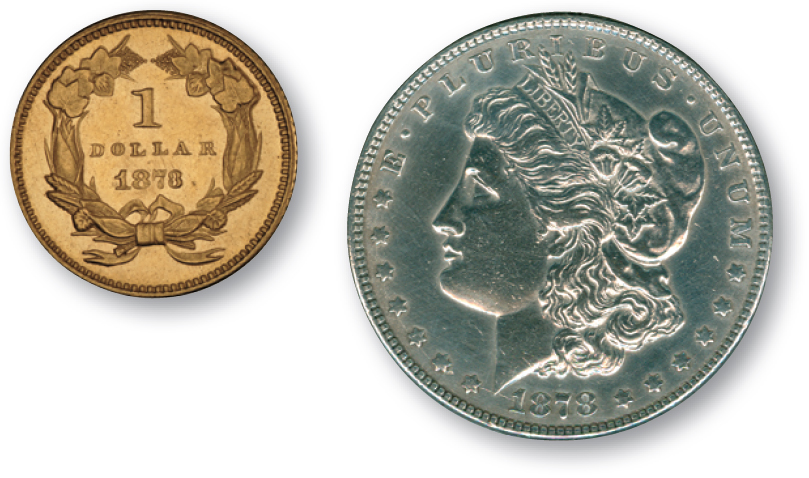The Fight for Free Silver.
Printed Page 499 Chapter Chronology
The Fight for Free Silver. While the tariff and regulation of the trusts gained many backers, the silver issue stirred passions like no other issue of the day. On one side stood those who believed that gold constituted the only honest money. Many who supported the gold standard were eastern creditors who did not wish to be paid in devalued dollars. On the opposite side stood a coalition of western silver barons and poor farmers from the West and South who called for free silver. Farmers from the West and South hoped to increase the money supply with silver dollars and create inflation, which would give them some debt relief by enabling them to pay off their creditors with cheaper dollars. The mining interests, who had seen the silver bonanza in the West drive down the price of the precious metal, wanted the government to buy silver and mint silver dollars.
free silver
Term used in the late nineteenth century by those who advocated minting silver dollars in addition to supporting the gold standard and the paper currency backed by gold. Western silver barons and poor farmers from the West and South hoped this would result in inflation, effectively providing them with debt relief.
During the depression following the panic of 1873, critics of hard money organized the Greenback Labor Party, an alliance of farmers and urban wage laborers. The Greenbackers favored issuing paper currency not tied to the gold supply, citing the precedent of the greenbacks issued during the Civil War. The government had the right to define what constituted legal tender, the Greenbackers reasoned: "Paper is equally money, when ...issued according to law." They proposed that the nation's currency be based on its wealth — land, labor, and capital — and not simply on its reserves of gold. The Greenback Labor Party captured more than a million votes and elected fourteen members to Congress in 1878. Although conservatives considered the Greenbackers dangerous cranks, their views eventually prevailed in the 1930s, when the country abandoned the gold standard.

After the Greenback Labor Party collapsed, proponents of free silver came to dominate the monetary debate in the 1890s. Advocates of free silver pointed out that until 1873 the country had enjoyed a system of bimetallism — the minting of both silver and gold into coins. In that year, at the behest of those who favored gold, the Republican Congress had voted to stop buying and minting silver, an act silver supporters denounced as the "crime of '73." By sharply contracting the money supply at a time when the nation's economy was burgeoning, the Republicans had enriched bankers and investors at the expense of cotton and wheat farmers and industrial wageworkers. In 1878 and again in 1890, with the Sherman Silver Purchase Act, Congress took steps to ease the tight money policy and appease advocates of silver by passing legislation requiring the government to buy silver and issue silver certificates. Though good for the mining interests, the laws did little to promote the inflation desired by farmers. Soon monetary reformers began to call for "the free and unlimited coinage of silver," a plan whereby nearly all the silver mined in the West would be minted into coins circulated at the rate of sixteen ounces of silver — equal in value to one ounce of gold.
By the 1890s, the silver issue crossed party lines. The Democrats hoped to use it to achieve a union between western and southern voters. Unfortunately for them, Democratic president Grover Cleveland supported the gold standard as vehemently as any Republican. After a panic on Wall Street in the spring of 1893, Cleveland called a special session of Congress and bullied the legislature into repealing the Silver Purchase Act because he believed it threatened economic confidence. Repeal proved disastrous for Cleveland. It did nothing to bring prosperity and dangerously divided the country. Angry farmers warned Cleveland not to travel west of the Mississippi River if he valued his life.